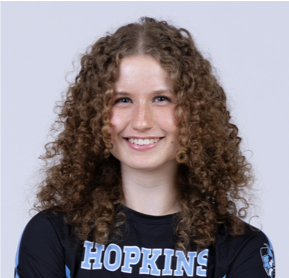
Everyone’s college search timeline varies, but there’s a few milestones you should keep in mind to ensure you’ll be ready to submit your application by the deadline. We’ve pulled together a list of 4 things to mark off your college checklist by the time you finish junior year of high school.
1. Visit campus (in-person or virtually)
Spending time on campus is one of the best ways to gain a true sense of a school’s culture and vibe. Observing students in their natural habitat can give you a sense of what a day in the life is really like. Take a campus tour, eat in the dining hall, explore the surrounding neighborhoods—and chat with current students along the way!
If finances are an issue, research fly-in programs. Many schools allow prospective and/or admitted students to apply for funding to cover the costs of travel to visit campus. Talk to your school counselor about opportunities that might be available to you.
Can’t make it to campus? Colleges offer a variety of virtual opportunities to learn about the school, connect with current students, and get a sense of whether it’s a match for you. Register for virtual events, picture yourself on campus through a virtual tour, and follow schools on social media to get to know the community.
2. Research beyond the basics
By the end of junior year, it’s a good idea to be familiar with which schools meet your college wish list criteria, from the major you plan to study to the city you want to be in. But keep in mind there’s a lot more to the college experience than just your classes and where you’ll be living.
Dig beyond stats like the most popular majors and average class size and think about what kind of community you hope to join. You might have questions like: Is the student culture collaborative? Can I engage with my interests outside of my major? Will there be other students who share my background and identity?
Answers to these types of questions are not always obvious on a school’s website. Instead, connect with current students directly on platforms like Blue Jay Connection, attend topic-specific events like Community Conversations, or DM your questions during student takeovers on Instagram (our story highlights feature past takeovers that may already answer them!).
3. Consider the money matters
Even if a school offers much of what you’re looking for, if it’s not financially feasible, then it’s not going to be the best match for you. There are numerous resources available to help you determine whether a college will be affordable.
Start by learning financial aid terms to make your research easier. It’s normal to see new words and phrases during this process so you’ll want to familiarize yourself with them to understand what each school’s financial obligation will entail.
Talk to your family about what you can afford. Keep in mind that the full cost of attendance is not always the amount you’ll have to pay; Hopkins and many other colleges offer financial aid that may significantly reduce your family’s expected contribution.
Be sure to take advantage of resources offered by the colleges themselves! You can attend financial aid sessions, use tools like the net price calculator to estimate your college costs, or contact a financial aid counselor with any specific questions about your personal circumstances.
4. Zero in on your top choice schools
Once you’ve checked off the items above, you can really start to narrow down your options. Consolidating your college list by the end of junior year leaves ample time to look into what each looks for in applications and prepare yours accordingly. Identifying your first-choice school also allows you to complete your application materials in time for Early Decision deadlines to further increase your chances of joining your preferred community.





